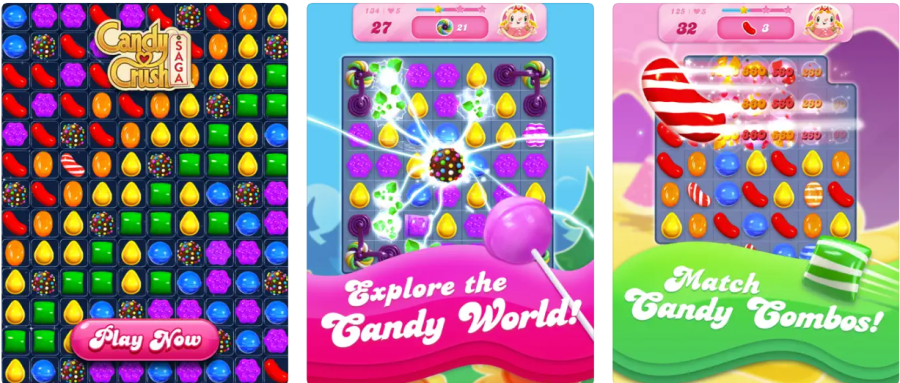There’s a long list of games that could compete for the title of ‘most influential game of the decade,’ but there are few that could realistically compete with Candy Crush. Released back in 2012, it went on to become one of the most popular games of all time and is today played by more than 270 million players in over 200 countries.
No one would have expected that this relatively straightforward game would become such a smash hit, least of all its developer King, who only had modest aspirations for the match-three puzzle game. Today, however, Candy Crush is part of video game folklore, and is a title that has had a significant influence on the gaming industry and beyond. Let’s take a look at just how far Candy Crush’s reach extends.

The Popularization of Mobile Games
Today, the mobile gaming industry is worth a staggering $100 billion, but it wasn’t always that way. In fact, for the first few years of smartphone gaming, it wasn’t clear whether the sector would have any success, let alone $100 billion worth. Candy Crush’s rapid rise to the top of the charts helped to popularize the idea of mobile gaming, and since then it essentially hasn’t looked back. You can argue that Candy Crush, along with other titles, helped to invent an entirely new genre, hypercasual gaming, which is characterized by uncomplicated gameplay.
The impact of this genre should not be understated. While PlayStation and Xbox games may appeal to gaming fanatics, hypercasual games have broad appeal, helping to significantly grow the gaming industry’s audience.
Influence on Other Games
The impact of a game can be measured by how much it influences other games. On that front, Candy Crush scores highly. The gameplay and general style can be seen time and time again in other titles. From a gameplay perspective, it helped to inspire the creation of a wave of match-three puzzle games, including Cookie Jam and Bejeweled Blitz. Stylistically, it inspired game developers to again incorporate candy imagery, a trend that was relatively dormant since its use in a number of games in the Super Mario franchise in the early 2000s. It’s most readily seen in slot games like Sweet Bonanza, which has been one of the most popular titles since its release back in 2019. In addition to inspiring other titles, there has also been a host of essentially direct copies of Candy Crush, including Candy Valley and Candy Puzzlejoy.
The Free-To-Play Business Model
The free-to-play business model is standard today, but that wasn’t always the case. In fact, in the early days, it was deemed to be a ridiculous idea that wouldn’t work. Candy Crush, while not the only game to use this model, showed that not only could it work, but that it could work extremely well. The Candy Crush revenue reports have shown this business model grew more profitable as time went on; in 2012, the game’s revenue was some $77 million. By 2018, it was $930 million. In 2022, it reached $1.2 billion — and it doesn’t show any signs of slowing down, either.

Gaming as a Spectator Sport
As with most things of the past few years, if you’d said to someone twenty years ago that people would sit down and watch other people play video games one day, they would have said, “That’s not a thing.” Today, it is. While it’s the relatively sophisticated Dota 2 and Counter-Strike: Global Offensive tournaments that seem to get the most attention, Candy Crush has also played its role in popularizing the concept of gaming as a spectator sport. The massive, worldwide popularity of Candy Crush has resulted in Candy Crush All Stars becoming the biggest mobile gaming competition in history, with a total money jackpot of some $1 million on offer.
So there we go! The next time you play Candy Crush, keep in mind that you’re not just playing a fun mobile game — you’re dabbling in history.



 Your total news and information resource for all things Science, Technology, Engineering / Mathematics, Art, and Medicine / Health.
Your total news and information resource for all things Science, Technology, Engineering / Mathematics, Art, and Medicine / Health.
Leave a Comment